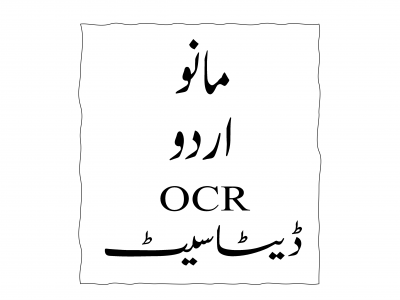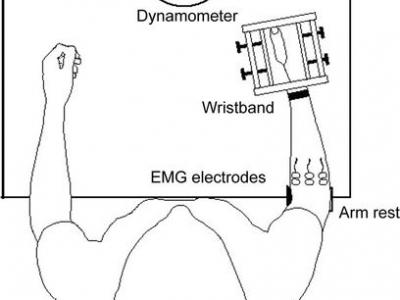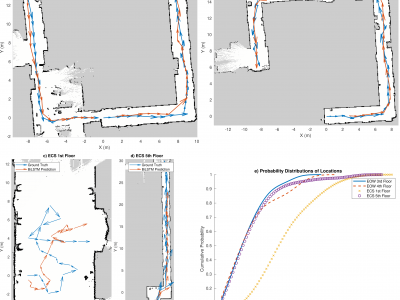Artificial Intelligence
The "MANUU: Handwritten Urdu OCR Dataset" is an extensive and meticulously curated collection to advance OCR (Optical Character Recognition) for handwritten Urdu letters, digits, and words. The compilation of the dataset has been conducted methodically, ensuring that it encompasses a wide variety of handwritten instances. This comprehensive collection enables the construction and assessment of strong models for Optical Character Recognition (OCR) systems specifically designed for the complexities of the Urdu script.
- Categories:
 781 Views
781 Views
With authorization from relevant departments in the hospital, we are uploading some research data. This dataset is used for research on indoor navigation systems in hospitals. The data includes panoramic photos (jpg) of the hospital, 3D modeling maps (png), as well as surveillance videos (ts) of indoor staircases, intersections, and other areas within the hospital. All data has been anonymized, and faces in the monitoring videos are all wearing masks to protect personal privacy.
- Categories:
 96 Views
96 ViewsThis data was recorded for emg based force/Torque estimation. EMG and torque signals were collected during simultaneous, isometric, but continuously varying contractions, corresponding to two wrist DoF. The experiment was carried out in two trials with a 5-min rest in between. Each trial included six combinations of tasks, separated by 2 min of rest to minimize the effect of fatigue. The performed tasks were categorized into individual and combined (simultaneous) DoF to test the ability to estimate isolated torque and torque in two simultaneous DoF.
- Categories:
 291 Views
291 Views
Any damage that affects the normal functioning of the lungs is termed as a lung disease,
which can prove fatal if not detected early. To address this challenge, two innovative techniques proposed
for the lung disease classification, supporting medical professionals to diagnose and provides preventive
measures at an early stage. The proposed Model 1 integrates a custom MobileNetV2L2 architecture, that
builds upon the MobileNetV2 framework through fine-tuning and customization. This model incorporates a
- Categories:
 1268 Views
1268 Views
<div style="color: #d4d4d4; background-color: #1e1e1e; font-family: Consolas, 'Courier New', monospace; font-size: 18px; line-height: 24px; white-space: pre;">Weakly-supervised segmentation (WSS) has emerged as a solution to mitigate the conflict between annotation cost and model performance by adopting sparse annotation formats (e.g., point, scribble, block, etc.). Typical approaches attempt to exploit anatomy and topology priors to directly expand sparse annotations into pseudo-labels.
- Categories:
 107 Views
107 ViewsWi-Fi FTM RSSI Localization dataset
Wi-Fi Fine Time Measurement for positioning / Indoor Localization in 3 different locations and using 8 different APs
Custom APs using ESP32C3 and Raw FTM is measured in nanoseconds
Data is only measured at the Router Side
Data is not measured at client side
Has 4 datasets inside the zip folder with over 100,000 data points
Contains processed Wi-Fi FTM packets from various routers in:
- Categories:
 1572 Views
1572 ViewsWi-Fi BLE RSSI SQI Localization dataset
Wi-Fi BLE RSSI for positioning / Indoor Localization in 4 different locations and using 18 different APs
Data is only measured at the Router Side
Data is not measured at client side
Has 12 datasets inside the zip folder with over 1,000,000 data points
- Categories:
 1059 Views
1059 Views
This is the supplementary document for the review paper titled “Comprehensive and Data-Driven Literature Review of Supernumerary Robotic Limbs,” which presents a comprehensive and data-driven review that offers a quantitative analysis of Supernumerary Robotic Limbs (SRLs), covering application areas, structural designs, control strategies, embodiments, and their interconnections.
- Categories:
 176 Views
176 ViewsThis is the official Thaat and Raga Forest (TRF) Dataset
Please do cite our paper: Link to Paper
Dataset is also available here: Link to Dataset
- Categories:
 1235 Views
1235 Views
This corpus comprises a diverse collection of authentic dialogues extracted from clinical encounters and from AI-generated interactions. Encompassing a wide array of scenarios, it offers a comprehensive snapshot of human communication within medical contexts and the evolving capabilities of AI. By intertwining genuine exchanges with those produced by AI models, the corpus facilitates a deeper understanding of communication dynamics and the progression of AI technology in simulating human interactions.
- Categories:
 404 Views
404 Views



